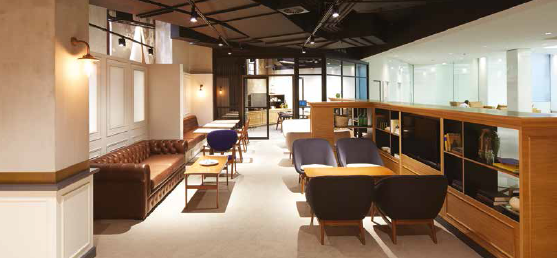Dynalite is such a flexible and scalable system that it is the solution of meeting a high expectation of any project, as it is energy efficient with maximum integration using third part equipment for the complete management control. The system is built up out of individual components the solutions are scalable which can suit the client’s budget and function requirements. The different controllers and relays can be combined to suit the projects needs. The Dynalite system is made up of components the Load Controllers, The user control, the sensors, system integration devices that can use third party systems and the software that all connected by Dynet, these components of the Dynalite system all work together to become a living system.
A Digital Addressable Lighting Interface (DALI) lighting system defines a network and controller as a universe. All light fittings in a project are connected together on the same networks. The DALI system assigns each light fitting a unique address, which allows a lighting control system a method to send instructions to individual light fittings and adjusting the levels. Each area can be broken up into logical groups to match the physical layout, this is for better energy management and performance. The DALI is a standard protocol to international electrotechnical commission (IEC). The DALI can also be used to communicate with sensors, switches, transformers and relay modules.
There are some limitations to the DALI system, which shouldn’t be exceeded. A DALI universe can’t have more then 64 DALI addressable devices. The 64 light fittings on a single DALI universe can be divided up into 16 logical groups allowing the light to be coordinated together. The DALI network only has functional isolation between the active power and the DALI network. You can’t have multi DALI’s on the same network as it can over load the 250mA maximum.
DALI ballast and transformers consume power even when the lamp is turned off which is the standby current consumption. When the lighting control system has instructed the ballast to turn its lamp off it will be in stand by mode ready for when its switch back on.
The three types of DALI lighting control are the DALI broadcasting, DALI addressing and DALI multi master. These types minimize the amount of cables required. The DDBC120-DALI is the control that is used in the DALI broadcasting system that controls all lamps together with twelve independently controlled outputs and individual configured. When you want your system to address all and group the lighting the DALI addressing setup is what you consider, using the DDBC320-DALI. The unit can coordinate three DALI universes allowing it to drive 192 DALI addresses. It is designed with a built in power supply and built in power replays for each universe that removes lamps stand by power consumption. The newest DALI controller is the DDBC120-DALI this allows you to full addressing, grouping and control on the DALI network via user interfaces such as sensors and dry contacts.
The DDBC120-DALI has the ability to control one full DALI universe that is 64 fittings as it is a group controller. It supports user interfaces connected direct to the DALI network. It allows multi master integration to Philips Dynalite DALI UIs so that sensors and dry input can use the same communication as DALI light fittings, The DDBC120-DALI can support up to 10 of these. This is a fully Dynet configurable device with an internal DALI power supply and 20A power relay.
Two DALI universes can be connected using the DyNet that will allow the DALI universes to behave as one seamless network. The grouping can be later on changed without touching the wiring. It has been created so that there is less network cabling. The DALI solution can be integrated directly into the Dynet network making it part of the system solution. The gateway can pass on the network messages received from the DALI network sensors to any other load controller. It’s a flexible and scalable system to suit any projects.




